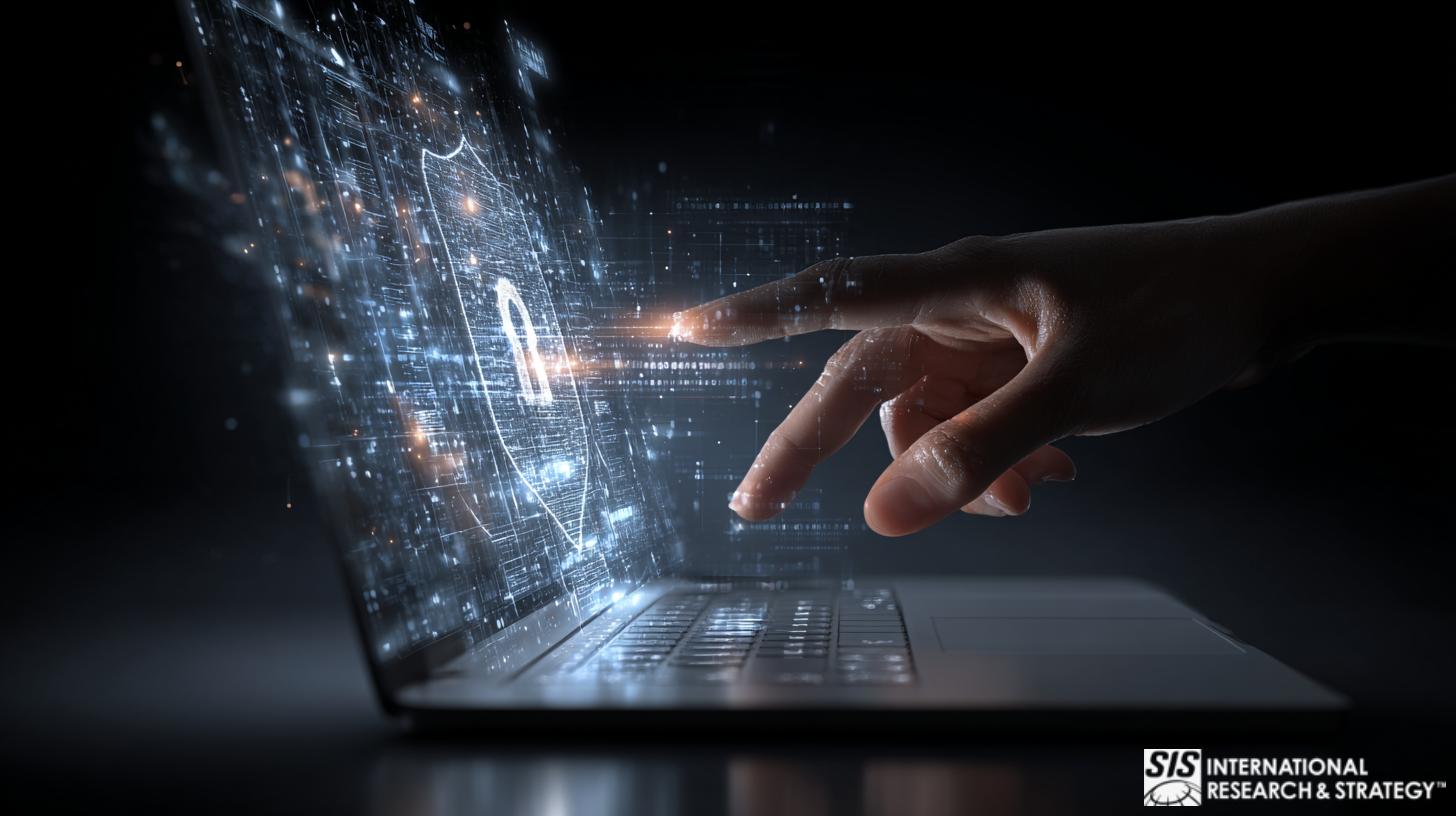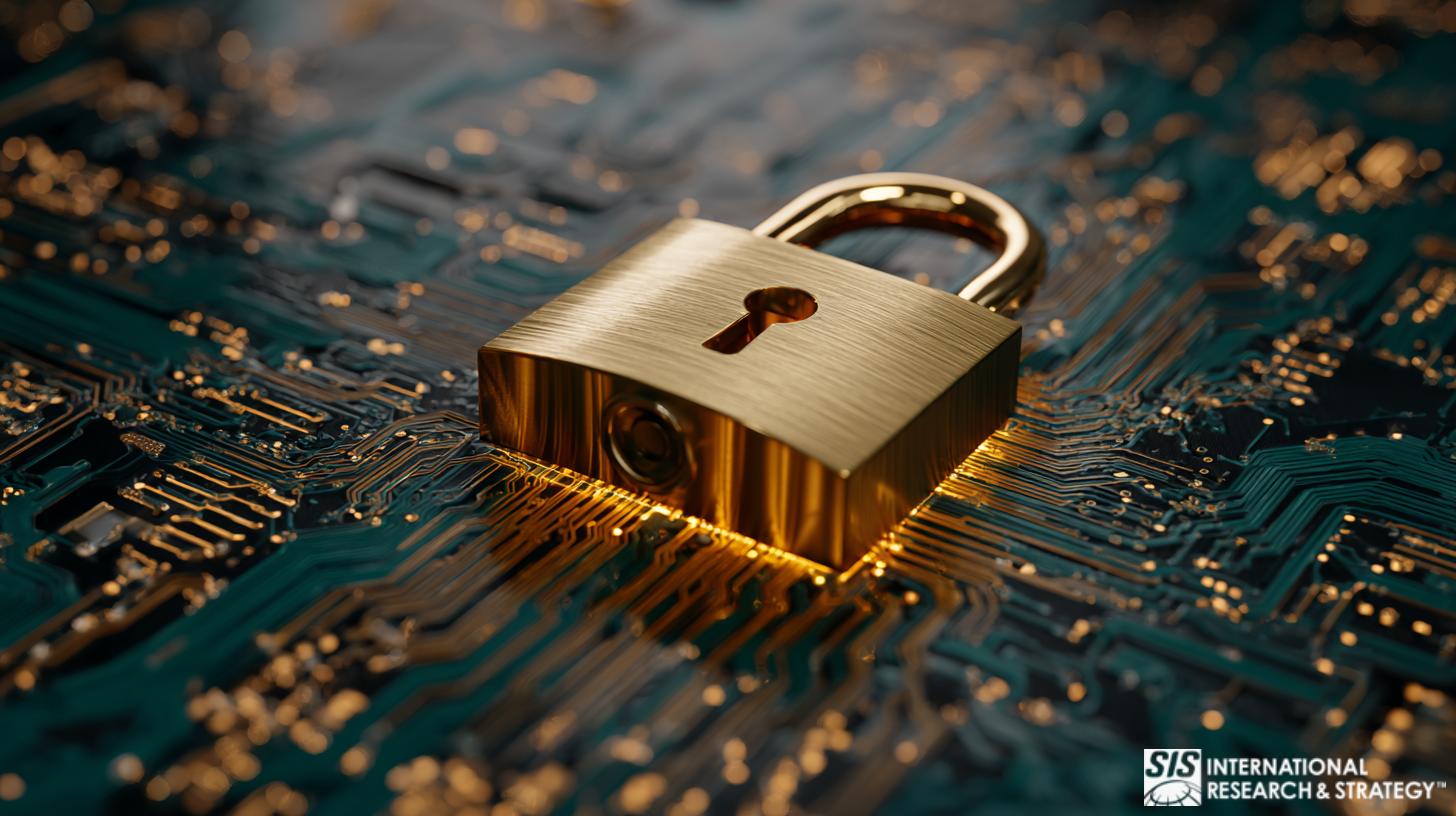
एक अलग ही वायरस
स्वास्थ्य सेवा क्षेत्र में साइबर घुसपैठ को रोकने के लिए चल रही लड़ाई का संक्षिप्त अवलोकन।
In addition to subversive hacking in the business world, where private information can be compromised and sensitive company data absconded with, cybersecurity measures are now employed to negate the effects of hacking by foreign entities, used a political weapon. It is an increasingly serious global problem, and one that has necessitated the implementation of advanced cybersecurity methodologies to counteract the increasingly sophisticated capabilities of hackers to subvert these very systems.
“In recent years, cybersecurity has been a growing concern in healthcare, with high-profile cyber-attacks and vulnerabilities causing disruptions for insurers, hospitals, and medical device makers. The stakes for patients are high too as patient data could be lost or tampered with, hospital services interrupted, or patients harmed through attacks targeting specific devices … “ 1
साइबर अपराध से लड़ने के लिए सरकारी हस्तक्षेप
The rapid digitization of the healthcare industry makes this sector particularly vulnerable to cyber attack, and this fact has not been lost on the US Congress. The House Energy and Commerce Committee recently convened to address cybersecurity in the health sector. Information Sharing and Analysis Centers (ISACS) may be key in providing enhanced security for healthcare providers and in thwarting efforts of would-be cyber attackers.
Through the interactive efforts of the 24 organizations that comprise the National Council of ISACs (NCI), great efforts are being made to “maximize information flow across the private sector critical infrastructures and with government. Critical infrastructure sectors and subsectors that do not have ISACs are invited to contact the NCI to learn how they can participate in NCI activities.”2
It is, of course, a Herculean undertaking to strengthen the partnership between public and private entities in healthcare with regard to cybersecurity, considering the myriad industries and agencies of government that are responsible for regulating and delivering said healthcare. Congress has been encouraged to provide tax breaks and other incentives to prompt companies to get involved with the ongoing effort of ISACs.
कम भागीदारी साइबर सुरक्षा कार्यान्वयन में बाधा डालती है
Unfortunately, poor participation rates among healthcare facilities have been a persistent problem in the ongoing efforts to implement effective cybersecurity measures across the sector. According to Terry Rice, vice president of IT risk management and chief information security officer at Merck, “companies may be hesitant to share information within an ISAC if they fear the information will not remain confidential to its members.”3
“I think the most shocking statistic was really the fact that 40% of the individuals at the top of an organization–executives like CEOs and CIOs, and even board members–didn’t feel personally responsible for cybersecurity or protecting the customer data.” Dave Damato, Chief Security Officer at Tanium, on CNBC’s Squawk Box, स्वास्थ्य सेवा उद्योग में साइबर सुरक्षा के बारे में बोलते हुए 13
स्वास्थ्य सेवा में साइबर अपराध की उच्च लागत

Aside from the obvious threat of compromised patient information and other incidents of data theft, failures of cybersecurity are incredibly expensive, to the tune of $6.2 billion annually, according to a 2016 research project conducted by the Poneman Institute. Insights revealed in their studies revealed that “nearly 90 percent of the healthcare organizations … had endured a data breach during the previous two years. Forty-five percent had more than five data breaches in that period, with the average cost of a cyber attack totaling $2.2 million. The data contained in electronic health records (EHRs) is often cited as the reason healthcare is such an attractive target in the eyes of a hacker.”4
As secure as people like to believe their health information is in the possession of their doctor’s office or hospital, it is often not the case. The ongoing digitization of health records has been an expensive proposition for the healthcare industry. Securing all that information is another monumental expense, and sometimes this part of the cybersecurity equation has been neglected in the interest of cost-savings, or just by the large-scale nature of the overall endeavor.
स्वास्थ्य सेवा में साइबर चोरी की आकर्षक प्रकृति
Of course, health records are a hot commodity on the black market, and they can fetch top dollar from parties seeking to obtain personal information, billing addresses, and credit card numbers. Hacking can be a very lucrative enterprise, indeed. Consider this example. “Hackers made off with more than 2.2 million patient records from Fort Myers, Florida-based 21st Century Oncology in March of 2016. A month later, someone stole a laptop with 205,748 unsecured patient records on it from Premier Healthcare, LLC.” 5
रैनसमवेयर का आगमन
रैनसमवेयर अधिकांश लोगों के लिए एक नया शब्द है, जो हाल ही में वैश्विक स्तर पर किए गए वानाक्राई हमलों से परिचित हो रहे हैं, जिसने महत्वपूर्ण बुनियादी ढाँचे की प्रणालियों को पंगु बना दिया है और ऐसे हमलों की विशेषता वाले डेटा की चिंता और संभावित हानि के शिकार लोगों से महत्वपूर्ण वित्तीय फिरौती प्राप्त की है। स्वास्थ्य सेवा उद्योग विशेष रूप से रैनसमवेयर घुसपैठ के प्रति संवेदनशील है।
"अस्पताल इस तरह की जबरन वसूली के लिए एकदम सही जगह हैं क्योंकि वे महत्वपूर्ण देखभाल प्रदान करते हैं और रोगी के रिकॉर्ड से नवीनतम जानकारी पर निर्भर करते हैं। दवा इतिहास, सर्जरी के निर्देश और अन्य जानकारी तक त्वरित पहुंच के बिना, रोगी की देखभाल में देरी हो सकती है या उसे रोका जा सकता है, जिससे अस्पतालों को फिरौती देने की अधिक संभावना होती है, बजाय इसके कि देरी का जोखिम उठाया जाए जिससे मृत्यु और मुकदमे हो सकते हैं।" 6
Ransomware malware, in effect, locks up a computer and makes data inaccessible unless a ransom is paid to the perpetrator. Usually, this payment is made in the form of Bitcoin. In most instances, a time limit is established for the ransom to be paid, otherwise the computers data will be destroyed. Though most stricken parties don’t pay the ransom, enough do to make it a particularly lucrative criminal enterprise.
The healthcare industry has been vulnerable to ransomware attacks because, surprisingly, many hospitals have taken inadequate steps to prevent cybersecurity breeches. Instead, most hospitals have focused their primary concern on meeting HIPAA compliance and meeting federal guidelines to ensure the security of patient information. Ultimately, most employees in healthcare are simply not trained well enough to recognize and thwart cyber attacks before they occur. Even when adequate training and cybersecurity measures are in place, it is a continuous challenge to outwit perpetrators who constantly remain one step ahead of the game.
IoT डिवाइस भी खतरे में हैं
To add a layer of seriousness to the present situation, cyber attacks can affect not only computers, but devices that are connected to them, as well. Medical tools, heart and glucose monitors are but a few examples of devices vulnerable to cyber attack. Vice-President Dick Cheney famously demanded that his pacemaker be made safe from cyber attack, lest those with ill-intent not manipulate the function of his device remotely. Quite frankly, interference with such devices can be deadly for the patients who depend on them to live.
मेडिकल हैकिंग के एक उदाहरण के रूप में, "मेडजैक के रूप में जाना जाने वाला एक वर्तमान में इस्तेमाल किया जाने वाला शोषण, हमलावर मेडिकल डिवाइस में मैलवेयर इंजेक्ट करते हैं और फिर पूरे नेटवर्क में फैल जाते हैं। इस प्रकार के हमलों में खोजे गए मेडिकल डेटा का उपयोग कर धोखाधड़ी या पहचान की चोरी के लिए किया जा सकता है, और यहां तक कि सक्रिय दवा नुस्खों को ट्रैक करने के लिए भी इस्तेमाल किया जा सकता है, जिससे हैकर्स ऑनलाइन दवा ऑर्डर कर सकते हैं और फिर डार्क वेब पर बेच सकते हैं।" 7
“No patients have, as far as I know, been killed due to a hacked pacemaker, but patients have been killed due to malfunction[s] of their medical devices, configuration errors, and software bugs. This means that security research in the form of pre-emptive hacking, followed by coordinated vulnerability disclosure and vendor fixes, can help save human lives.” मैरी मो, SINTEF के सुरक्षा शोधकर्ता, “आगे बढ़ो, हैकर्स। मेरा दिल तोड़ दो” (वायर्ड)13
एफसीसी ने अब सुझाव दिया है कि चिकित्सा उपकरणों के IoT आपूर्तिकर्ता अपने द्वारा निर्मित उत्पादों में सुरक्षा उपाय शामिल करें; यहाँ मुख्य शब्द सुझाया जा रहा है। वास्तव में उन निर्माताओं के लिए अनिवार्य सुरक्षा प्रथाओं और आवश्यकताओं को लागू करना समय लेने वाला प्रयास है। इसके अलावा, उपकरणों और डेटाबेस के बीच डेटा रिले करने के लिए नियुक्त नेटवर्क को भी साइबर सुरक्षा कार्यान्वयन और निगरानी की महत्वपूर्ण आवश्यकता है।
नया राष्ट्रपति, नई व्यवस्था
There was much speculation as to how the Trump administration would address issues of cybersecurity. On May 11, 2017, the president signed an executive order that mandated a review of the nation’s overall abilities to combat criminal cyber-activity. The order places the brunt of responsibility concerning cybersecurity on federal agencies which were to do risk assessments and turn in their respective reports within 90 days. Additional reports examining critical infrastructure risks were due six months after the president’s order was issued.
“आदेश में बॉटनेट द्वारा उत्पन्न खतरे की समीक्षा करने की बात कही गई है, जो स्वचालित रूप से उत्पन्न स्पैम ट्रैफ़िक वाली वेबसाइटों को लक्षित करते हैं। मिराई बॉटनेट पिछले साल इंटरनेट में भारी व्यवधान के लिए जिम्मेदार था। लेकिन एक्सेस नाउ का कहना है कि आदेश में भेद्यता प्रकटीकरण के लिए सरकार की प्रक्रिया और डेटा उल्लंघनों के प्रति उसकी प्रतिक्रिया को भी संबोधित किया जाना चाहिए।”
There is no overall preventative measure or measure that can eliminate the risk of cyber attacks. Rather, hospitals, clinics, and private practices can only hope to work together and manage the continuous risks in the interest of protecting the private information and the general safety of their patients. Concurrently, continuous technological advancements will hopefully address the vulnerability of medical devices and computer networks.
स्वास्थ्य क्षेत्र और उससे परे साइबर अपराध के संभावित विनाशकारी प्रभावों को रोकने का यह प्रयास संयुक्त राज्य अमेरिका से कहीं आगे तक फैला हुआ है। वर्तमान में दुनिया भर में साइबर हमलों की बाढ़ को रोकने के लिए या कम से कम साइबर अपराधियों की ओर से स्वास्थ्य सेवा प्रणालियों में घुसपैठ करने और जहाँ भी संभव हो, तबाही मचाने और जबरन वसूली करने के लिए किए जा रहे अंतहीन प्रयासों के प्रभाव को कम करने के लिए एक वैश्विक प्रयास चल रहा है।
साइबर हमलों के पीछे राजनीतिक प्रेरणाएँ

With the hostile political climate that exists between North Korea and virtually every other country in the civilized world, it is not surprising that the rogue nation has been cited as a probably offender in the recent WannaCry ransomware attacks, and other ill-willed endeavors undertaken for political reasons and for the purposes of financial extortion.
"साइबर सुरक्षा शोधकर्ताओं को तकनीकी सुराग मिले हैं, जिनके बारे में उन्होंने कहा है कि वे उत्तर कोरिया को वैश्विक वानाक्राई "रैंसमवेयर" साइबर हमले से जोड़ सकते हैं ... 150 देशों में 300,000 से अधिक मशीनें संक्रमित. Symantec and Kaspersky Lab said … some code in an earlier version of वानाक्राई सॉफ्टवेयर लाजरस ग्रुप द्वारा उपयोग किए जाने वाले कार्यक्रमों में भी दिखाई दिया था, जिसे कई कंपनियों के शोधकर्ताओं ने उत्तर कोरिया द्वारा संचालित हैकिंग ऑपरेशन के रूप में पहचाना है।” 10
सभी विशेषज्ञ यह नहीं मानते कि वानाक्राई रैनसमवेयर हमला वित्तीय कारणों से प्रेरित था। ब्रिटिश साइबर सलाहकार हैकर हाउस के मैथ्यू हिकी जैसे कुछ लोगों का मानना है कि अपराधियों को बस "जितना संभव हो सके उतना नुकसान पहुँचाने" की उम्मीद थी। निश्चित रूप से यह उन देशों में मामला था जो हमले से सबसे अधिक प्रभावित हुए थे, जिनमें भारत, ताइवान, यूक्रेन और रूस शामिल हैं।
रूसी नेता व्लादिमीर पुतिन जैसे कुछ लोगों ने वानाक्राई रैनसमवेयर हमलों में एनएसए की भूमिका के लिए उसे दोषी ठहराया। माना जाता है कि वानाक्राई तकनीक "एक लीक टूल पर आधारित है जो विंडोज में सुरक्षा दोष का लाभ उठाती है जो एनएसए से उत्पन्न होती है। पुतिन ने बीजिंग में कहा, "हम पूरी तरह से जानते हैं कि जिन्न, विशेष रूप से, गुप्त सेवाओं द्वारा बनाए गए जिन्न, अपने स्वयं के लेखकों और रचनाकारों को नुकसान पहुंचा सकते हैं, अगर उन्हें बोतल से बाहर आने दिया जाए।" रूसी सरकारी समाचार सेवा टास के अनुसार.” 11
“This next president is going to inherit the most sophisticated and persistent cyber espionage cultures the world has ever seen, He needs to surround himself with experts that can expedite the allocation of potent layers of next-generation defenses around our targeted critical infrastructure silos.” James Scott, Senior Fellow, Institute for Critical Infrastructure Technology 14
स्वास्थ्य क्षेत्र में साइबर-घुसपैठ से लड़ने के रुझान
Obviously, the threat of cybersecurity breaches across all sectors of business and industry will not abate. In healthcare, there will be an ongoing and incessant need to improve technology and overall vigilance to avoid disastrous incidents in the future. Certain protective trends are emerging that might be seen as the future of cybercrime deterrence in healthcare.
At the top of the list is an increasing migration to cloud-based information security tools. This move “will allow the tools to be updated more dynamically to address zero-day type malware. This move to the cloud should ultimately make it more economical to make these tools available to all healthcare providers – large and small.” 12
In addition, the healthcare industry will be forced to encourage increased information sharing and collaboration across health networks and between facilities. This mutual cybersecurity effort will be difficult to instigate as health institutions are often quite insular by nature. It is predicted that this sharing of information will reach beyond healthcare to include many sectors of business and institutional endeavors to minimize risks for all involved.
Ultimately, the effort to negate the dangers of cybersecurity breaches, ransomware, and new and emerging threats in this arena will come down to education and awareness on all employee levels in healthcare and beyond. When everyone is well-educated and made to see warning signs of cyber-risks and what they can do to be part of an overarching effort to stem the tide of cyber-incursion, the healthcare industry and all protectors of civilized information sharing around the globe will continue to make meaningful strides towards limiting the damaging effects of cybercrime in all sectors.
AI-Driven Website Security: WP Safe Zone for Healthcare
In the healthcare sector, where sensitive patient data is a prime target for cyberattacks, robust website security is critical. The rise of AI in cybersecurity is providing powerful solutions to combat these threats. One standout example is the WP Safe Zone plugin, tailored for WordPress websites.
WP Safe Zone utilizes artificial intelligence to protect websites from malware, brute force attacks, and unauthorized access. Its AI algorithms constantly monitor and adapt to emerging threats, ensuring real-time protection for healthcare organizations’ online platforms.
As cyber risks in healthcare continue to grow, tools like WP Safe Zone demonstrate how AI can safeguard critical systems, ensuring both data security and compliance with strict regulations.
हम आपके साइबर सुरक्षा प्रयास में सहायता कर सकते हैं
एसआईएस इंटरनेशनल रिसर्च ने दशकों तक स्वास्थ्य सेवा उद्योग के साथ कई स्तरों पर बातचीत की है, जिसमें स्वतंत्र पारिवारिक प्रथाओं से लेकर बहु-स्तरीय और अखंड स्वास्थ्य नेटवर्क शामिल हैं। स्वास्थ्य सेवा क्षेत्र में व्यवसायों और संस्थानों द्वारा सामना की जाने वाली चुनौतियों के बारे में हमारी अनूठी समझ बेजोड़ है। हम हितधारकों पर शोध और खुफिया जानकारी प्रदान करते हैं[/fusion_text][fusion_text]
हमारे समाधानों में शामिल हैं:
आज, हमारे सबसे प्रतिष्ठित स्वास्थ्य सेवा संस्थानों और उनके द्वारा सेवा प्रदान किए जाने वाले रोगियों पर लक्षित साइबर-अपराधीकरण द्वारा लगाए गए खतरे की अतिरिक्त जटिलता के साथ, हम अपनी भूमिका को सर्वोच्च गंभीरता के साथ मानते हैं। एक ऐसी कंपनी के रूप में जो स्वास्थ्य सेवा उद्योग के महत्व और बहुआयामी प्रकृति को समझने में गर्व महसूस करती है, हम स्वास्थ्य संबंधी प्रथाओं, सुविधाओं और संगठनों को उसी उच्च-गुणवत्ता और व्यापक शोध क्षमताओं के साथ सेवा प्रदान करना जारी रखेंगे, जिसकी हमारे ग्राहक अपेक्षा और मांग करते आए हैं। इस तरह, हम चिकित्सा समुदाय को स्वास्थ्य सेवा क्षेत्र में साइबर हमलों के बहुत वास्तविक और गंभीर खतरे को समझने और उसका मुकाबला करने में अपनी भूमिका निभाने की उम्मीद करते हैं।
इस शोध के संकलन में निम्नलिखित संसाधनों का उपयोग किया गया:
http://www.raps.org/Regulatory-Focus/News/2017/04/04/27267/Cybersecurity-House-Committee-Looks-to-Build-on-Public-Private-Partnerships/#sthash.x4Xvdf6q.dpuf
https://www.nationalisacs.org/
http://www.raps.org/Regulatory-Focus/News/2017/04/04/27267/Cybersecurity-House-Committee-Looks-to-Build-on-Public-Private-Partnerships/#sthash.x4Xvdf6q.dpuf
https://learningnetwork.cisco.com/blogs/talking-tech-with-cisco/2017/03/21/cybersecurity-and-healthcare-a-forecast-for-2017
https://learningnetwork.cisco.com/blogs/talking-tech-with-cisco/2017/03/21/cybersecurity-and-healthcare-a-forecast-for-2017
https://www.wired.com/2016/03/ransomware-why-hospitals-are-the-perfect-targets/
https://www.wired.com/2017/03/medical-devices-next-security-nightmare/
https://techcrunch.com/2017/05/11/trump-signs-long-delayed-executive-order-on-cybersecurity/
http://www.healthcareitnews.com/news/top-10-cybersecurity-must-haves-2017
http://www.dingit.tv/highlight/1441974?utm_source=Embedded&utm_medium=Embedded&utm_campaign=Embedded
www.healthcareitnews.com/blog/3-trends-shaping-future-cybersecurity
https://www.forbes.com/sites/danmunro/2016/12/18/top-ten-healthcare-quotes-for-2016/#5f47fb6b127f
http://www.goodreads.com/quotes/tag/cyber-security



